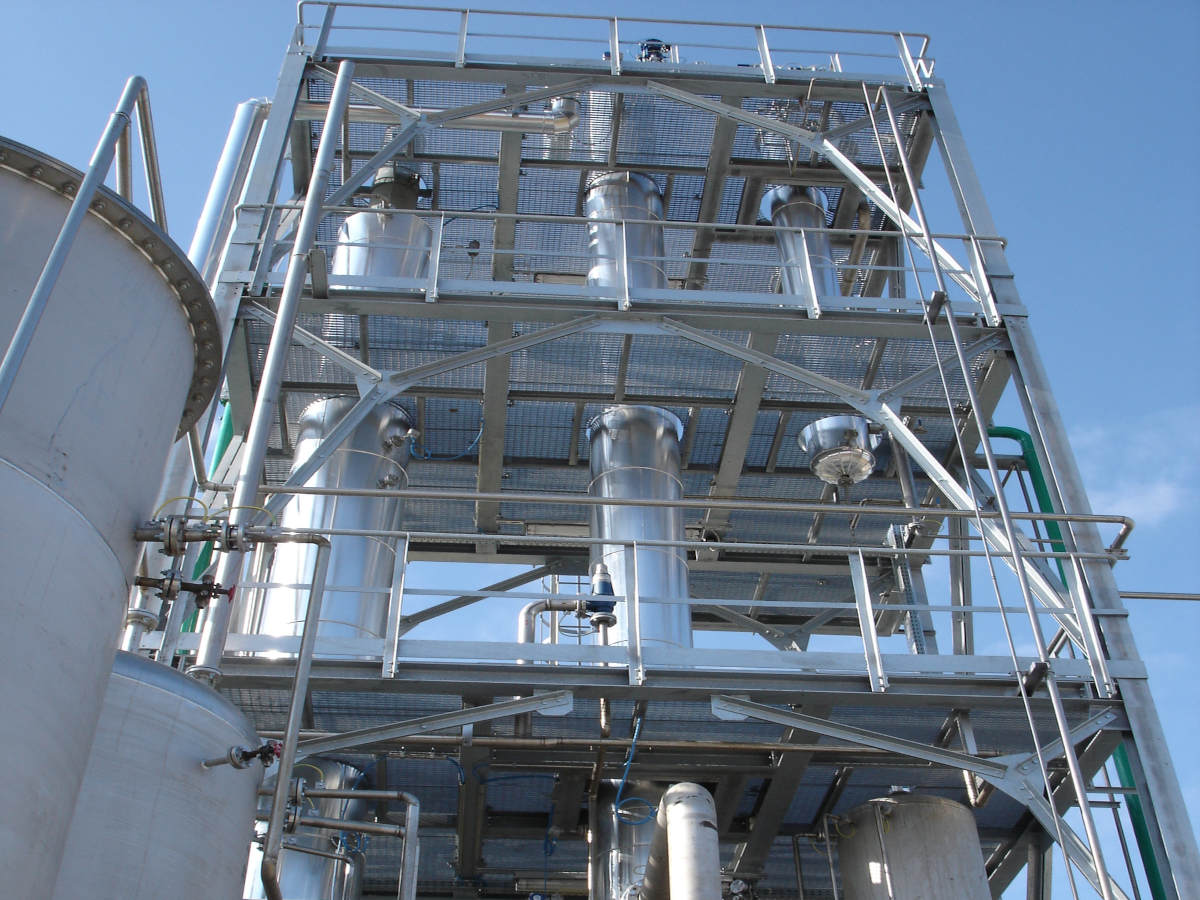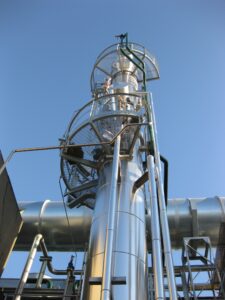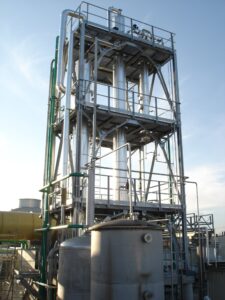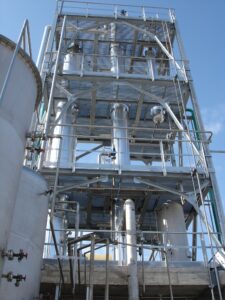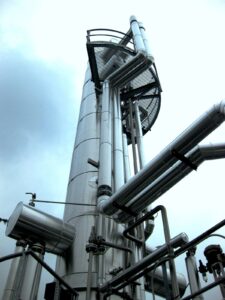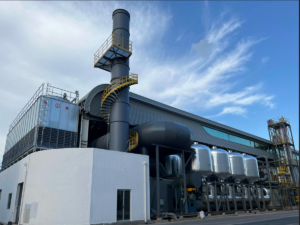Units designed to separate multiple solvents into individual components (or groups), designed to optimise performance and cost according to customer requirements and the actual technical situation.
BrofindⓇ‘s long experience has led to the installation of these units in a wide variety of industries (printing, flexible packaging, adhesive tapes, chemical industry, etc.), with treatment capacities ranging from a few hundreds to a several thousands kg/h.
Features and advantages
All of the plants we supply have the following features and advantages:
- Turnkey supply;
- Tailor-made design and optimisation of the plant according to the customer’s requirements, on a case-by-case basis;
- Selection of the materials used based on the application and the involved solvents;
- Customized design in case of reduced space available;
- Maximization of energy efficiency by means of specific heat recovery units;
- Control panel with PLC for automatic management of the plant, designed for remote monitoring services.
Operating principle
Since these are product finishing units, they are each designed ad hoc to optimize performance and cost according to customer requirements.
In particular, several configurations are possible:
- Batch or continuous operation
- Configuration on single column or on several columns in series, working at different pressures
Single column batch (discontinuous) distillation minimizes initial investment costs while providing great flexibility in management depending on the stream to be treated. This solution is widely used, especially for low solvent flow rates. Distillation in multiple columns allows continuous operation, suitable for production with high solvent flows. With the same degree of purity of the recovered solvents (selectable according to the customer’s requirements), the configuration with several columns connected in series offers the following advantages:
- Possibility of operating the various columns at different pressures to obtain different fractions from the fed solvents
- Less specific energy consumption
- Possibility of recovering energy from the various involved streams
This configuration is generally preferred for more significant solvent flow rates
Plant engineering solutions
Case 1 – Distillation on solvent recovery plant regenerated with inert gas
The solvent recovered in systems regenerated with inert gas (nitrogen) – for example in the printing industry for flexible packaging – is often present in a mixture (acetate, alcohol) with traces of water and other impurities. For high solvent flow rates, continuous distillation with 2 or 3 columns is often chosen:
- In the first column, the impurities (water, high boilers, acetic acid) are removed from the bottom together with a reduced amount of solvent; the head fraction is transferred to the second column.
- The second column allows the recovery of pure acetate from the bottom, while the azeotrope acetate + alcohol is recovered from the head.
- The third column, if present, allows the separation of a portion of the acetate (which is recycled upstream) to increase the purity of the recovered alcohol.
Some heat recovery exchangers make it possible to increase overall energy efficiency by preheating the feedstock with hot output products. It is also possible to use a single heat exchanger as a condenser for the first column and a reboiler for the second column, further increasing energy recovery and simplifying the plant layout. For low solvent flow rates, on the other hand, the single batch column solution replaces the first two columns, minimizing investment costs.
Case 2 – Distillation on solvent recovery plant regenerated with steam
For solvents from steam-regenerated solvent recovery units, the decanter in the unit allows separation of the aqueous phase from the organic phase. A distillation column may be required to treat the organic phase when multiple water immiscible solvents – e.g., toluene and hexane – are fed simultaneously into the tape manufacturing process. A single column allows separation of the two solvents with excellent performance and low consumption. Solvents that are miscible with water and treated in steam systems represent a more complex case. Here, several columns are required in series to achieve effective separation of the organics from the water and increase purity.
Automated solvent distribution
A valuable addition to the two solutions described above is our automatic solvent dispensing system: tailor-made systems used in the industrial printing industry to ensure the automatic dosing of solvents to printing machines with suitable pressure and temperature conditions.
The storage area consists of one or more separate tanks, each with its own solvent withdrawal circuit to supply the system with reserve solutions and ensure power to the machines even in the event of a field failure.
The process is controlled by a control system consisting of a programmable control unit (PLC) and a data monitoring instrument (SCADA), which is a touch-screen panel located on the control panel. This type of structure allows continuous information on the status of the plant (anomalies of the utilities on site, notifications of any leaks) and provides the corresponding information on the solvent levels, facilitating the solvent supply procedures. The circuit for extracting the solvent from the tanks consists of a pneumatic pump that ensures that the solvent is conveyed to the printing machine.
Features and benefits:
- automatic management of feed requirements
- automatic verification of safety conditions
- online and remote display of operating conditions, diagnostics, level trends and utilization
The system can also be equipped with:
- a solvent leak detection system, limited to the storage tanks
- equi-potential check system, activated during tank loading operations.
